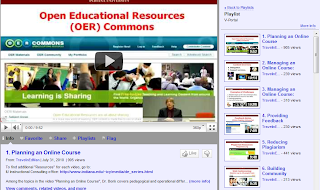Importantly, faculty who had never taught a Web-based course saw time as a key barrier to implementation, while faculty who had taught such courses did not list time as problematic. These same non-users - faculty who had never taught Web-based courses - thought flexibility might be an advantage to teaching such a course, while their experienced colleagues who had taught them did not recognize greater flexibility as an advantage. The most commonly listed suggestion from non-users and experienced Web instructors alike was that training was essential to implementation at their institutions. There were statistically significant gender differences in the responses, with females perceiving their institutions' preparedness more favorably than males and males self-reporting their own technological readiness higher than did females.
There have been numerous efforts to assess students' perceptions of barriers and enablers to online instruction. The 2010 Student Readiness Report found that females who preferred online courses had higher means on individual attributes and typing accuracy while males who favored online instruction had higher means on reading rates and technical knowledge. The Louisiana Board of Regents uses SORT (Student Online Readiness Tool) to measure students' readiness for online courses. SORT includes measures of technology experience, access to tools, study habits, lifestyle factors, student goals, and learning preferences in its assessment. Portland State University provides a self-assessment tool for students designed to help students realize that online classes require self-motivation and self-discipline (log in regularly, interact with online discussions, complete assignments, etc.), time management, technical and computer skills, and communication skills (including "netiquette").
San Diego City College has an Online Learning Readiness Assessment designed to determine whether students have the "technical and student skills" necessary to succeed in an online course. There are 20 questions in this tool (modified below):
1. My reason for taking an online course
2. How often can you log into your online course?
3. How much time will you spend studying and interacting with your online course?
4. How do you rate traditional classroom discussion with an instructor and other students?
5. How much help do you need when an instructor hands out directions for an assignment?
6. How do you prefer information to be presented?
7. Are you motivated to meet deadlines?
8. If you have a disability, do you know who to contact for assistance?
9. If you don't understand an assignment, do you know who to contact?
10. Are you comfortable working with computers?
11. Are you comfortable with file management?
12. Do you know how to use a word processor?
13. Are you comfortable using an Web browser?
14. Are you comfortable using e-mail?
15. Are you comfortable using a mouse?
16. How are your keyboarding skills?
17. What will you do if your computer breaks down or you lose your Internet connection?
18. What speed is your Internet connection?
19. Are you comfortable downloading and installing programs?
20. Where would you go for technical support?
Similar questions might be useful for a faculty member considering teaching an online course. We need to know more about what helps online instructors master their courses and virtual classrooms so that we can help others make the transition more smoothly. But we're definitely in Stage 4 (Implementation) of online innovation, with many signs that confirmation (the final stage) has become widespread. Thousands of faculty members have decided to continue teaching online and to use tools like Confer to maximize the potential of this innovation.
Are you ready?













